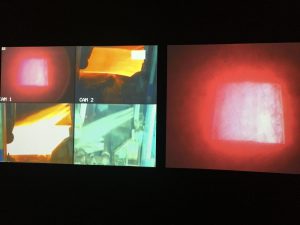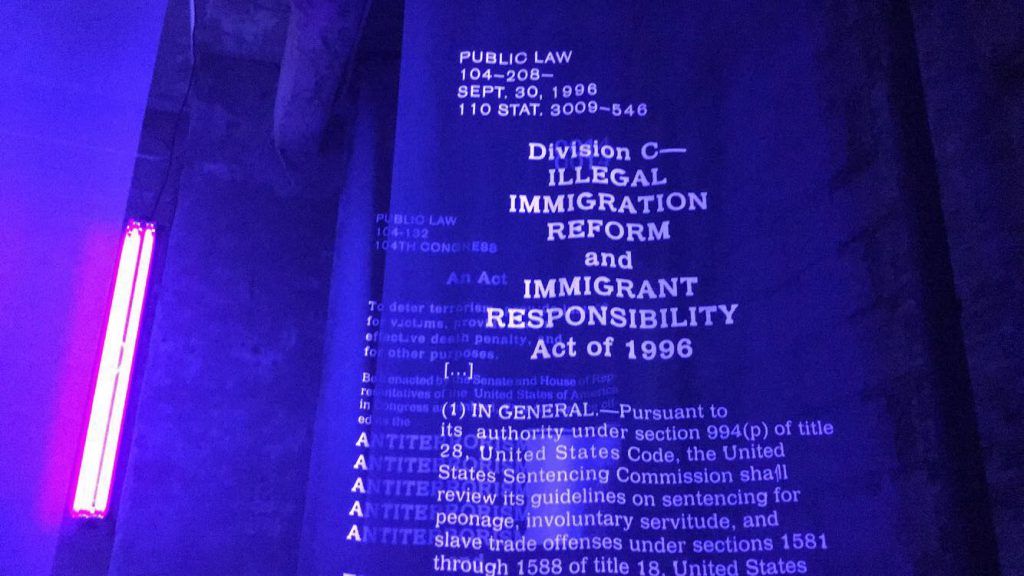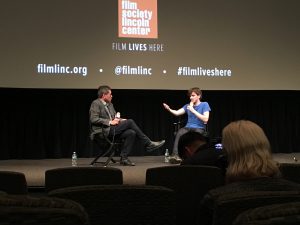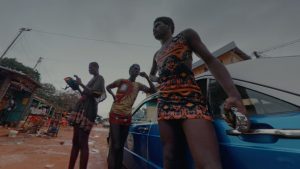Showing your work at a theater is tremendous entitlement. You have your audience’s undivided attention(hopefully) from the beginning to the end since your work is the only element to be observed in the space. In a exhibition setting, on the contrary, people would walk around wandering in their mind and attempting to see as many work as possible. As our professor perfectly described, “you’ll go out-of-fucks a man can give” by the end of a whole exhibition, I also found myself getting inpatient to finish a whole piece looking for something more visually captivating. However, my attention and curiosity were caught by some pieces which seem to share a similar theme: the duality of creation and destruction.

The one I specifically liked was a 2 channel video installation called Eye/Machine I by Harun Farocki. I, as a media maker/filmmaker, point my camera towards people(my subjects) and scenery, which is determined by my human creativity and intention to tell a story. There are also other cameras that monitor, identity, and target objects for purposes like surveillance, quality assurance, and even attacking. Its origin comes from military practices and their functions are developed by a combination of algorithms, stored geographical data, and/or live footage. As Farocki points out how industrial production aims to minimizes manual work, there is a possibility of occurrence of war of machines. Although machines obviously have to be made by hands of human, they won’t need human’s brain and guidance to execute their task once they are produced. Through footage of military archives dropping bombs on specified targets from aircrafts, Farocki illustrates how emotionless and automatic machines are. Using two screens are effective in this case because it enables the artist to put more information, but right amount of graphic information to understand the story. Since having two screens next to each other adds another dimension, I actually got a little scared and intimidated by it and sensed urgency of the discussed matter. Footage from cameras located at factories to monitor machine’s effectiveness was very simple and repetitive, yet extremely powerful as they highlight how machines manage same heavy physical task repeatedly without exhausting themselves easily like human beings do. Theoretically and symbolically, the artist brings up intelligent machines’ capability to destroy, create and protect. Especially in military and war sphere, protection can mean a reason for destruction as they think they attack their enemies in order to protect their sovereignty and people. Thus, people are protected, but I cannot ignore the destruction that cause in other people’s lives and environment. This piece ultimately led me to reevaluate functions of camera and how it can be used in destructive ways.
I couldn’t help but notice some people stopped by to see a work, took some pictures, and left. So did I for some pieces, but I tried to take my time to fully appreciate each work. I red in other class that audience attention is, by far, the most scarcest commodity in distribution industry today. However, I realized that when we produce a powerful work, people will devote their attention and our story gets to the audience. That’s a good motivation to keep going!



 I saw lots of abrupt cuts, unique angles and replacements of cameras, and less explanations. All the films focus on young males and how they interact with each other. The shared theme among the three pieces seemed to be nature, plants, and fruits such as boys hanging out in abandoned buildings, cave, and around their houses. The locations of the shoots are different for each film including Argentina, France, and Vietnam. However, the director did not use conventional texts indicating time and location or personalize characters. It actually depersonalizes the image and characters. I started to realize there are more similarities than differences among people all over the world. Third piece was very interesting and experiments with the boundaries of repetitions where sounds get extremely overwhelmed. All of the sounds are juxtaposed two sentences starting “Seems like A is B” and last throughout the entire film. Moreover, image the filmmaker chosen to go along with the sentences are footage taken from 360 degree GoPro attached to roller skaters and men dressed as women cruising a town with their car. Again, no explanations to those characters at all and the image seem to be pretty much observational.
I saw lots of abrupt cuts, unique angles and replacements of cameras, and less explanations. All the films focus on young males and how they interact with each other. The shared theme among the three pieces seemed to be nature, plants, and fruits such as boys hanging out in abandoned buildings, cave, and around their houses. The locations of the shoots are different for each film including Argentina, France, and Vietnam. However, the director did not use conventional texts indicating time and location or personalize characters. It actually depersonalizes the image and characters. I started to realize there are more similarities than differences among people all over the world. Third piece was very interesting and experiments with the boundaries of repetitions where sounds get extremely overwhelmed. All of the sounds are juxtaposed two sentences starting “Seems like A is B” and last throughout the entire film. Moreover, image the filmmaker chosen to go along with the sentences are footage taken from 360 degree GoPro attached to roller skaters and men dressed as women cruising a town with their car. Again, no explanations to those characters at all and the image seem to be pretty much observational.